A learning planner helps you break down big goals into manageable steps, track progress, and stay consistent. Here’s how to use one effectively:
Quick Tip: Use SMART goals (Specific, Measurable, Achievable, Relevant, Time-bound) to set yourself up for success.
Want to start today? Pick a planner, outline your goals, and break them into small, actionable steps. A learning planner isn’t just a tool – it’s your roadmap to mastering any skill.
The right planner can make a big difference in how you track and develop your skills. It’s all about finding one that fits your learning style and daily habits.
There’s no one-size-fits-all when it comes to planners. Here are some popular options, each with its own strengths:
| Planner Type | Format | Best For |
|---|---|---|
| Hobonichi Techo Weeks | Compact weekly layout with graph paper | Quick daily tracking and portability |
| Hobonichi Techo Original (A6) | Daily pages with a structured format | Detailed daily progress notes |
| Bullet Journal | Fully customizable system | Creative learners who need flexibility |
| Hobonichi Cousin (A5) | Comprehensive daily/monthly views | In-depth skill tracking and organization |
The Hobonichi Techo series is especially noteworthy for its use of Tomoe River S paper and thread-and-glue binding, which allows the pages to lie flat – perfect for detailed notes.
When picking a planner, focus on features that align with your goals and habits. Here are a few key things to consider:
Once you’ve found a planner that fits your needs, you can make it your own.
Customizing your planner can keep you motivated and engaged. Here are some ways to add a personal touch:
For a creative boost, check out themed sticker kits like Dark Moon Paper’s "Lilac Dusk" or "Electric Forest" collections. They can transform your planner into a space that’s both functional and inspiring.
A well-planned learning strategy not only keeps you organized but also helps you focus on what you want to achieve. Turning vague ideas into specific objectives makes progress easier to measure.
Be clear about what you want to accomplish. Instead of writing something general like "improve at photography", aim for detailed goals such as "learn manual mode settings on my Canon EOS R6" or "develop skills to shoot professional portraits using natural light."
Here are some examples of specific, actionable goals:
Once you’ve outlined your main goals, break them into smaller, actionable steps to make steady progress.
Breaking big goals into smaller tasks makes them more manageable and less overwhelming. Think of it as climbing a staircase – focusing on one step at a time keeps you moving forward and helps you stay motivated.
Here’s a structured example for learning portrait photography:
| Level | Example: Learning Portrait Photography |
|---|---|
| Process Goals (3-5 steps) | 1. Learn camera basics 2. Understand lighting techniques 3. Improve composition 4. Develop editing skills |
| Key Projects (per process) | For "Learn camera basics": – Practice manual mode settings – Experiment with aperture adjustments – Understand shutter speed |
| Milestones | – Take 100 photos in manual mode – Complete 3 portrait sessions – Create a portfolio with 10 edited images |
Breaking goals into smaller steps like this helps you focus on progress and keeps you from feeling overwhelmed.
SMART goals help you stay organized and focused. Here’s how to apply them:
Creating a well-organized planner is key to staying on track with your goals. By setting up your planner pages thoughtfully, you can build a system that supports steady progress.
Design your planner with layouts that cater to different timeframes. This helps you stay organized and manage your learning activities effectively.
Monthly View
Weekly Spreads
Weekly layouts are perfect for breaking down your plans into manageable chunks. Divide each week into sections for:
Daily Pages
Daily pages help you focus on specific tasks. Include:
These layouts provide a clear structure for tracking your progress and maintaining momentum.
Consistent tracking is essential for forming habits and achieving your goals. Research shows new habits often take about 66 days to solidify. Use dedicated sections in your planner to monitor your journey:
| Tracking Element | Purpose | Example Format |
|---|---|---|
| Habit Grid | Track daily practice habits | Monthly calendar with checkboxes |
| Skill Milestones | Celebrate key achievements | Progress bar or checklist |
| Learning Log | Record detailed insights | Space for daily journal entries |
| Time Tracker | Measure practice duration | Weekly time blocks |
Visual tools like these can make tracking both effective and motivating.
A visually appealing planner can keep you motivated. Tools like Dark Moon Paper’s sticker kits (e.g., "Lilac Dusk" or "Electric Forest") can bring your pages to life. Here are a few ideas to make your planner more engaging:
"Students like having their progress tracked with CBM. They find their graphs motivating, so that it helps them work harder. They find that their graphs provide them specific feedback that helps them become more purposeful learners."
- Lynn Fuchs, PhD, Vanderbilt University
Keeping track of your progress helps you stay motivated and build momentum. Studies suggest that visually marking achievements can trigger dopamine release, encouraging a positive cycle of success. Here’s how you can effectively monitor your learning journey:
Daily Progress Tracking
Set up a "success folder" in your planner to collect positive feedback and accomplishments. This visible reminder can help you stay motivated during tough times. Use this system to document your observations and gain deeper insights into your progress.
After tracking your progress, take it a step further by reflecting on your experiences. Journaling about what you’ve learned can clarify your achievements and highlight areas for improvement. Adding visual or creative touches to your journal can make the process more engaging.
Here are some journaling prompts to guide you:
| Focus Area | Reflection Questions | Action Steps |
|---|---|---|
| Skills Gained | What new abilities have I developed? | List ways to apply these skills. |
| Challenges | What obstacles did I face? | Write down how you overcame them. |
| Victories | What milestones have I reached? | Plan your next goals. |
"Tracking your progress is an empowering practice that allows you to stay motivated, focused, and inspired on your path to success." – Evolve Training Center
Use what you’ve documented and reflected on to improve your approach over time. Regularly assessing your progress can help you fine-tune your strategy. When making adjustments, consider these tips:
Refine Your Goals
If a method isn’t working, don’t hesitate to change it. Research shows that mixing different aspects of learning – known as interleaving – can improve mastery. Keep track of these changes in your planner to see what works best for you.
Refine your learning strategy by setting clear goals and making your planner a practical tool for progress.
Here’s how to make the most of your planner:
Ready to dive in? Follow these steps to kick off your learning plan:
| Step | Action | Purpose |
|---|---|---|
| Choose Format | Pick a paper planner | Boost memory retention |
| Initial Setup | Add contact info and dates | Build a solid structure |
| Brain Dump | List all goals and tasks | Clear mental clutter |
| Plan Ahead | Schedule 2 weeks in advance | Stay on track |
These steps will help you transition from planning to active learning. Add personal touches to keep yourself motivated. Dr. Stephanie Venn-Watson, Co-Founder & CEO of Fatty15, suggests rewarding yourself: "The most important part is finding fun ways to reward myself when I achieve something – even if it’s just treating myself to frozen yogurt at my favorite local spot".
"We don’t learn from experience. We learn from reflecting on experience".
Your planner can be more than just a schedule – it’s a tool for mastering skills through regular practice and thoughtful reflection. Want to make it more engaging? Try themed sticker kits from specialty stores like Dark Moon Paper to create layouts that inspire you every day.
Stickers Made for Planning
Our custom stickers are a fuss-free way to brighten up your planner pages with perfectly-sized designs that add a spark of personality to every layout.
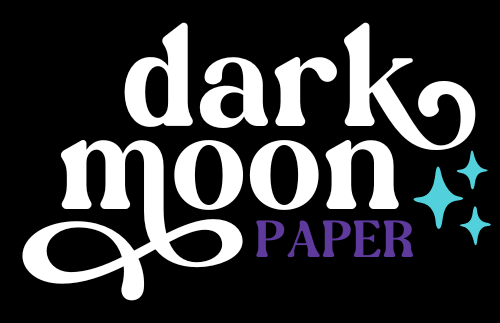
Why use planner stickers?
Planner stickers make organizing easy, fun, and personal! Add color, creativity, and structure to every page, transforming your planner into a tool that reflects you. Perfect for tracking, decorating, and staying inspired daily!
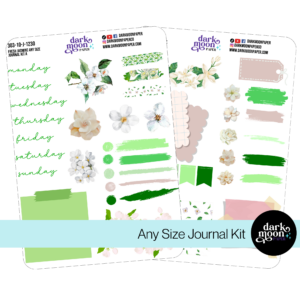
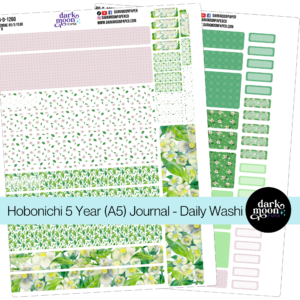
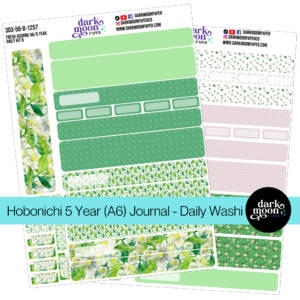
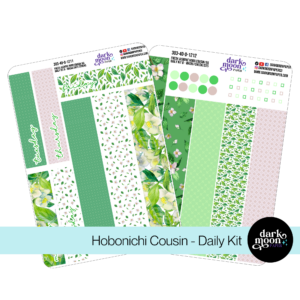

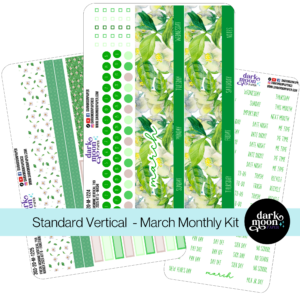
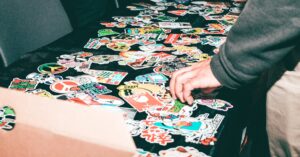
Hello and welcome!
I’m Rachael Snow, a lifelong artist and entrepreneur, and I started Dark Moon Paper to blend my love of art, technology, and the mysterious beauty of the world around us. My sticker kits are meant to set the mood, tell a story, and give you a little escape from the ordinary.
I work from my cozy studio tucked away in the beautiful woods of Oregon, surrounded by nature and a dark night sky full of stars.